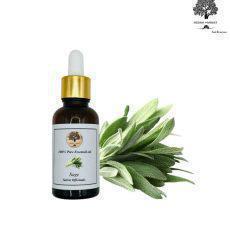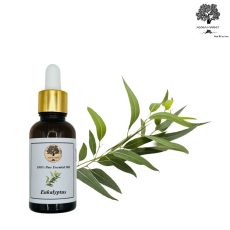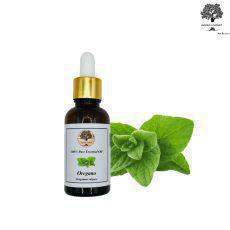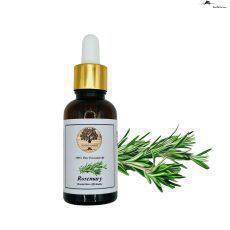Description
100% Physical Composition
Ingredients : 100% pure essential oil of Salvia officinalis
Extraction Method: Steam distilled
Production : July 2023
Expiration Date: Provided on the package
**Attention: must be diluted in olive oil or other oil before use **
Harmful if swallowed | Causes skin irritation | Causes serious eye injuries | It can cause an allergic reaction on the skin | It can be fatal if swallowed and enters the respiratory tract | Toxic for the aquatic organisms, with lasting noxious efects.
What Is Sage Oil?
Sage essential oil comes from the steam distilled leaves of the herb sage or Salvia officinalis. Also known as garden sage, Dalmation sage, true sage and common sage, this herb gets its name from the Latin word “salvere,” which means “to save, and is best known for its therapeutic properties.
The plant is native to southern European regions and nations surrounding the Mediterranean sea, particularly Greece and Yugoslavia. Accounts show that the Romans and Greeks had a high regard for sage and even considered it sacred. During the ancient times, sage was used to preserve meat and prevent other foods from spoiling.
According to historical accounts, sage oil was considered good for both the body and mind. Sage essential oil is often compared to clary sage (Salvia sclarea). While they both come from the same evergreen shrub family, they are very different from each other. Both oils have a pale yellow-green color, but sage has a strong, spicy scent, while clary sage has a sweet, nutty aroma. Because sage oil may trigger sensitizations in some, clary sage oil is often used as a substitute to it because of its milder nature.
TYPES OF USE – THERAPIES
Oral Use : Add about 1 to 2 drops of 100% essential oil to make tea, smoothies, or food for a soothing effect, and help reduce inflammation in the gums. The Natural Standard Herb and Supplement Guide states that 25-50 microliters (or 1/2 to 1 drop) can be taken orally one to three times a day.
As a deodorant, relaxing, aphrodisiac, antidepressant, put 5-6 drops of sage essential oil in the essential oil burner.
For flu, removal of bad oral cavity and gum inflammation, make gargles by putting 1-2 drops of sage essential oil in 1 cup of hot water. Optionally add honey or sugar or salt.
To deal with respiratory problems, headache and digestive aid, take inhalations for 10 minutes over a bowl of 1 liter of warm water and 3-4 drops of sage essential oil.
To treat cellulite, relieve muscular pains and relaxation, add 6-8 drops of sage essential oil to the tub.
For tonic, aphrodisiac massage and to treat cellulite and alleviate muscular pain, put 25 drops of sage essential oil in 50ml of base oil (almond oil, avocado oil, apricot oil, staphylococcus oil).
To stimulate hair growth add 100ml shampoo or hair mask 10-15 drops of sage essential oil.
For oily skin and acne add 10 drops of sage essential oil in 25ml cream.
To flavor your room, put 15 to 20 drops of essential oil in 250 ml of water, in a bottle, shake it and spray it.
Precautions
It is not recommended to use essential oil during pregnancy and lactation.
Do not use directly on the skin.
Is Sage Oil Safe?
Sage oil is dangerous only when used in high concentrations. Its thujone content, which is considered hazardous when isolated, does not pose any problem for its users if the oil is used moderately. Among other herbs that contain this chemical compound, sage is considered the most commonly used and safest. However, it is because of thujone that it shouldn’t be used by people with sensitivities, or by children of all ages.
People who drink alcohol should avoid using sage oil, as it can heighten their intoxication. Pregnant women (the oil can cause uterine contractions) and nursing women (it can slow down breast milk production) should also avoid using it.Because it works as a stimulant, people with epilepsy or hysteria should also avoid using this essential oil.
To check if you are a good candidate to benefit from this essential oil, we suggest consulting a qualified aromatherapy practitioner or physician first.











